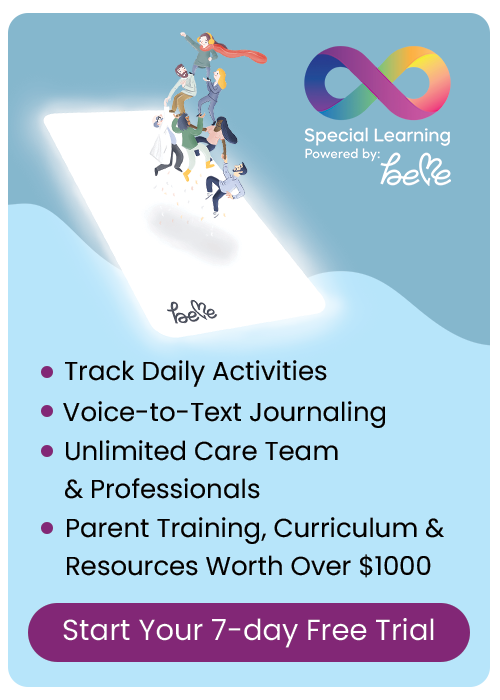Blog Categories
- ADHD
- Applied Behavior Analysis
- Autism Awareness
- Autism Service Providers
- Case Studies
- Dignosis
- Classroom Management
- Credentials
- Ethics
- Family Matters
- FAQs About LIVE Events
- Financial Planning
- Holiday Planning
- IEP's
- Panelists
- Private Equity in Autism & ABA Industry
- Psychopharmacology
- Sensory Processing Disorder
- Speech and Communication
- Subject Matter Experts
- Summer Planning
- Transition Planning
ABA Methods in Use: Teaching Puzzle Skills
Expert Name: Tabitha Kirby, MA, BCBA
Expert Title: MA, BCBA
Company Name:
Company URL:
Short Bio: Tabitha Kirby received her bachelor’s degree in psychology and master’s degree in special education with specialization in Applied Behavior Analysis from The Ohio State University. As an expert in the field of behavior analysis,
Tabitha has worked in various clinical, school, and community settings. As a consultant for families of individuals with Autism, Tabitha led and implemented a variety of home-based programs. She has extensive knowledge and experience in creating special education curriculum and training programs to provide superior educational outcomes for children with special needs around the globe.
ABA Methods in Use: Teaching Puzzle Skills
To a typically developing child, a puzzle may seem like a fun challenge. To a child with special needs, it may seem like a daunting task. In order to help your child learn how to do a puzzle, the task must be separated out into as small of steps as possible. Here are some tips and strategies for teaching puzzle skills to a child using the methods of Applied Behavior Analysis.
1. Start with a simple island inset puzzle with chunky pieces that have knobs or pegs. The simplest puzzle will have a picture that matches the piece they are to put in the hole. The first level of puzzle is an island inset.
2. Remove all pieces from the puzzle. Present pieces one at a time with the instruction to “Put in,” or “Do puzzle.” This will allow you to assess what pieces require further teaching. Take notes on what pieces your child can do independently and what pieces he or she needed help with either getting in the right spot or turning the right way. Pieces that your child can put in successfully will not need to be taught.
3. One you have determined what pieces will need taught, select the order you will teach these pieces.
4. Begin teaching a piece of the puzzle by placing all the pieces in the puzzle, except for the target piece. Present the puzzle to your child with the instruction, “Put in,” or “Do puzzle.” Use whatever prompts are necessary for your child to be successful at first. Prompts may include, but are not limited to: laying the piece right next to the hole facing the right direction, laying the piece right next to the hole and needing turned, tapping the piece that the child needs to pick up, physically prompting your child to turn the piece the right direction. 5. Gradually, over a few tries or a few days of a single prompt level, begin fading the prompt so that your child can begin to be more independent with the target piece. Once all prompting is faded—this could be a week or even a month after beginning—and your child is successful at putting the piece in independently no matter where the piece is presented or what direction it is turned, we would say that the piece is “mastered” when presented alone.
6. Once the piece is mastered when presented alone, it’s important to test it for mastery with other pieces. If the child was able to put in other pieces of the puzzle at the start, present these pieces along with the target piece and the puzzle, and give instruction again. The target piece would be considered mastered once your child can do it independently with all of the other mastered pieces when presented in this manner.
7. If there were no mastered pieces in the original assessment, after the first piece is taught, begin teaching the second piece in the same manner as the first (step 3-4).
8. Once your child is independently successful with the second piece, present the puzzle with both the first and second target pieces out.
9. Once your child can put both pieces in without prompting, move on to teaching the third piece. You will continue to follow these steps to teach one piece at a time until all pieces have been taught and mastered.
Your child may not view a puzzle as fun at first, but once he or she can complete a puzzle independently they will have learned a skill that can help them in many ways. First, they have a foundational skill to learn other puzzles. Knowing how to do puzzles will provide them with an activity to do during free play, whether alone or with peers. Secondly, you now have something that your child can do to completion while you do something you need to do. The more puzzles your child is taught, the longer the period of time you have to do other things. Thirdly, your child being able to accomplish something that seemed so daunting at first will give them some confidence to learn other difficult tasks.
RECOMMENDED PRODUCTS
Global ABA Practitioner Kickstart Program
Build Your Own CE Library – Gianna Apicella (20 CEs)





